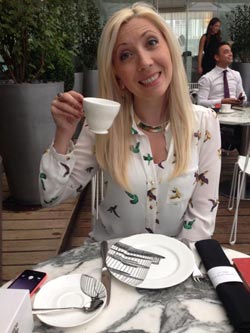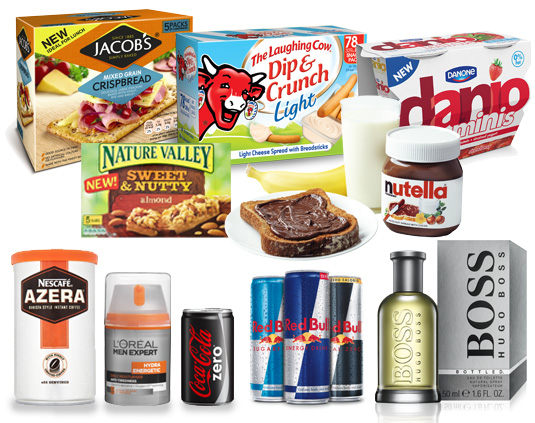Why showing is better than telling when it comes to new brands
Forget research panels: get your product in front of consumers, says Hannah Campbell.

Brands have an abundance of options available to them when it comes to gleaning valuable insight from consumers to gauge their opinion on new, and existing, products.
Social media is clearly a gold mine, with communities of fans, foes and even the indifferent on hand to provide their feedback.
Both Walkers and Nestle have even used social media to crowd source their products, asking consumers to determine which flavours of their snacks should hit the shop shelves.
So, what options are available to brands if they wish to establish the thoughts and opinions of a particularly targeted demographic of people, say women who are between the ages of 20-25, mother to one, living in a specific area and earning a certain amount?
The cost of research
Sure there are research panels available, but these can be incredibly costly, with the cost only rising as the level of segmentation increases. This mean, too often, too little research is conducted, which can be as bad as doing no research at all.
A classic example is Cleopatra, a highly popular soap brand in France and had built a solid fan base of loyal customers. The soap was to be launched in Quebec but, unfortunately, the brand guardians failed to conduct the appropriate level of research into this new territory and the people inhabiting it.
A base-line level of research was conducted (in Toronto!), which asked few questions. The result was a complete lack of understanding of what the people of Quebec were looking for in a soap, and the launch of a product that was priced more expensively than the leading soap brand at that point, Dove.
The result? Cleopatra failed to make an impact with consumers in Quebec. Quelle Surprise.
Ask the audience
So what's the alternative? Each and every day there are millions of people that report to work, many of whom spend most of their time behind a desk. They have thoughts, feelings opinions and desires – they're consumers. They're all of us.
This huge global audience represents an encyclopaedic level of demographics, including profiles of consumers that marketers wish to understand and appeal to, depending on the product they are launching.

This is the thinking behind The Work Perk, which is a way for marketers to reach this huge global audience at their desk, provide a sample of their product and ask them what they think of it. It's a simple equation: each person gets a freebie and, in return, they can provide their feedback should they so wish.
Brand awareness
It's not only consumer research that workplace sampling provides. There's also much to be said for the opportunity to drive brand awareness that workplace sampling offers.
Marketers have the opportunity to get their product into the hands of their desired audience, be it a specific segment or a broader demographic, and drive positive word of mouth as well as photo shares and mentions across social media and networking apps.
The workplace is the perfect environment to drive this awareness too as it's a place where people normally feel safe, relaxed and sociable, and, therefore, more likely to give something their time and focus.

We recently executed a targeted campaign for our client, Unilever, to distribute samples of its new blended butter, Gold from Flora, along with Hovis, to a giant one million females working at British companies with the highest prevalence of Mums.
Of those that received the product samples, a huge 189,551 provided their feedback via a dedicated online questionnaire, revealing a number of insights around the product and their perception of the brand. The results from the sampling provided Unilever with important consumer feedback on its product that it wouldn't necessarily have received via a less structured and targeted approach to research.
Brands that understand who their customers are and what they want will succeed. The global workforce is ready and waiting to be utilised for research purposes and brands can be as targeted as they wish in terms of who they receive feedback from. And beyond that, everyone loves a good freebie, don't they?
Words: Hannah Campbell
Hannah Campbell is operations director at The Work Perk which rewards the global workforce by sending samples of desirable products directly to the desks of millions of office workers.
Like this? Read these...
- The designer's guide to working from home
- How to build an app: try these great tutorials
- Free graphic design software available to you right now!

Thank you for reading 5 articles this month* Join now for unlimited access
Enjoy your first month for just £1 / $1 / €1
*Read 5 free articles per month without a subscription

Join now for unlimited access
Try first month for just £1 / $1 / €1
Get the Creative Bloq Newsletter
Daily design news, reviews, how-tos and more, as picked by the editors.

The Creative Bloq team is made up of a group of art and design enthusiasts, and has changed and evolved since Creative Bloq began back in 2012. The current website team consists of eight full-time members of staff: Editor Georgia Coggan, Deputy Editor Rosie Hilder, Ecommerce Editor Beren Neale, Senior News Editor Daniel Piper, Editor, Digital Art and 3D Ian Dean, Tech Reviews Editor Erlingur Einarsson, Ecommerce Writer Beth Nicholls and Staff Writer Natalie Fear, as well as a roster of freelancers from around the world. The ImagineFX magazine team also pitch in, ensuring that content from leading digital art publication ImagineFX is represented on Creative Bloq.
